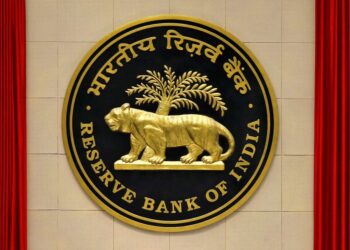Picture this – you swipe your SBI card at your neighbourhood grocery store. SBI bank is your card issuer, but the payments are made through a payment gateway. Remember the RuPay symbol?
This is what we are going to talk about – RuPay!
In the above example, the RuPay payment gateway communicates with your bank to check if you have enough balance to pay. Once verified, the payment goes through. Simple and secure.
But when did Rupay come into existence? And what’s the story behind its historic growth? The question is demanded because a few years ago, the only symbols anybody could remember were the Visa, Mastercard, or maybe Diners.
Let’s read below to find out!
The story behind Rupay
The amalgamation of the words Rupee and Payment, RuPay, the proud child of the NPCI, was created in the year 2012 to launch India into the global payments market through an indigenous card facility, making it a force to be reckoned with in this ‘tech-savvy’ era. But with most of the market occupied by its international competitors, RuPay needed help finding its place.
Around this time, PM Narendra Modi introduced Pradhan Mantri Jan Dhan Yojana encouraging the Indian population that did not have a bank account to create one. He promoted the importance of it and urged the masses to open an account under the Yojana. He then encouraged PSUs to issue RuPay cards to accounts under this Yojana. This crucial strategy paved the way for RuPay in the market in 2014. By 2020, RuPay had successfully grasped 60% of the total market compared to its 17% market in 2017.
RuPay remains one of the most sought-after payment gateways by nearly 1158 banks nationwide and shows no signs of stopping!
How is Rupay transforming India?
The introduction of RuPay walked hand in hand with multiple changes in a good way. It played a pivotal role in reducing India’s dependence on external card networks and allowed public and private sector banks to issue and manage cards at reasonable rates. Here are some changes it brought about in the country:
- Affordable card processing: RuPay is a domestic payment gateway. It reduced the cost of clearing and settlement transactions, making the processing of cards affordable for the banks. Due to its low processing charges, it remains the go-to digital payment solution amongst the country’s rural population.
- Low MDR rate and convenient banking: The MDR rate of RuPay was much lower than other cards. This sole difference led to its victory over international card networks. Since it was designed to be interoperable across all payment channels, it made all transactions, mobile banking, etc, more effortless.
- IRCTC RuPay Prepaid Card: The IRCTC RuPay prepaid card allowed customers to book train tickets easily, and the card came with multiple benefits, such as zero transaction cost on train ticket booking and accidental insurance, making it a profitable choice.
- RuPay Mudra Card: RuPay facilitated another vital change in the sector of small-scale industries with the RuPay Mudra Card. In collaboration with the Pradhan Mantri Jan Dhan Yojana, the card aimed towards ‘funding the unfunded’. Its main motive was to consider the financial needs of the rural population. The scheme gave credit card facilities to the beneficiaries through RuPay cards.
Conclusion
It’s been nine years since the birth of India’s indigenous payment gateway, RuPay, and it has come a long way, dominating approximately 60% of the market. But there’s still more left for it to achieve and make its mark worldwide. RuPay plans to step further into the world of technology through innovative payment technologies, steadily cruising our country towards a developed and futuristic era.








